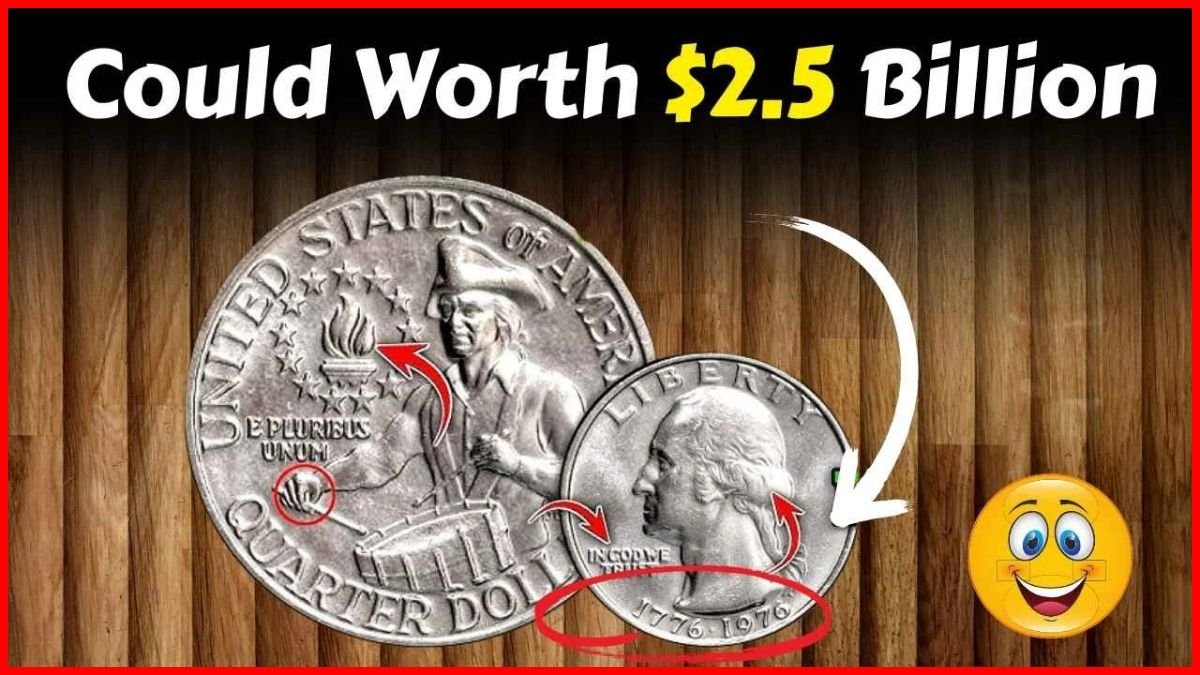Rare 1776–1976 Quarter: You know what’s fascinating? Sometimes the coins jingling in your pocket carry more than just loose changethey carry stories. One of the most talked-about examples is the 1776–1976 Bicentennial Quarter, released to celebrate America’s 200th birthday. Most of these quarters are just that ordinary coins worth 25 cents. But whispers of rare versions, minting mistakes, and even wild legends of billion-dollar quarters have kept collectors buzzing for decades.
The Story Behind the Bicentennial Quarter
Back in 1976, the U.S. Mint decided to do something special for the nation’s bicentennial. Instead of the usual eagle, the reverse side of the quarter showed a colonial drummer, with the dual dates 1776–1976 stamped proudly.
Over 1.6 billion coins were struck, mostly in copper-nickel, and they spread quickly into circulation. Everyone who carried change in the late 70s knew the “drummer boy quarter.”
But here’s where it gets interesting: some unusual versions have popped up. Collectors talk about strange alloys, like coins struck on the wrong metal, or dramatic minting mistakes such as double-die errors where letters or numbers appear doubled. While the tale of a “$2.5 billion quarter” is more myth than reality, the fact remains—rare errors can make these coins surprisingly valuable.
Why Some Quarters Are Worth More Than Others
In the world of coin collecting, rarity equals value. A plain Bicentennial Quarter is worth only its face value, but certain features can make one stand out:
- Unusual Metals – A few may have been struck on silver, or even other metals by mistake. Those are extremely rare.
- Double-Die Errors – If words like LIBERTY or the date look doubled, collectors take notice.
- Minting Mistakes – Off-center strikes, missing layers, or odd finishes often make a coin worth far more than 25 cents.
While it’s unlikely you’ll stumble across a coin worth millions, history shows that rare coins have sold for tens of thousands—even millions—in auctions.
Could One Be Sitting in Your Pocket?
It sounds like a dream, right? But believe it or not, rare coins often turn up in the most ordinary places—old jars, inherited collections, or even in change from a corner store. The odds are slim, but not zero.
That’s why collectors (and curious folks) always take a second look.
How to Spot a Potentially Valuable Quarter
If you’re curious about checking your coins, here are a few simple things to look for:
- Color: Does it have an unusual golden or silver shine?
- Weight: Regular quarters weigh 5.67 grams. Anything heavier (or lighter) might be different.
- Magnet Test: Precious metals like gold or platinum won’t stick to a magnet.
- Design Details: Look closely for doubled letters or numbers.
- Professional Grading: At the end of the day, only a certified grading company (like PCGS or NGC) can confirm authenticity.
Other Bicentennial Quarters Collectors Want
Even if you don’t stumble across the mythical “billion-dollar quarter,” there are still some valuable ones out there, including:
- 1976-S Silver Proofs – Made with 90% silver, they’re highly collectible.
- Double-Die Obverse Coins – With noticeable doubling in the design.
- Clad Error Coins – Coins that show mistakes in the metal layering process.
The Hunt for Hidden Treasures
Maybe the stories of billion-dollar coins are exaggerated, but here’s the truth people have found rare and valuable quarters hiding in plain sight. That thrill of discovery keeps collectors searching.
So next time you grab a quarter for parking, laundry, or a vending machine, pause for a moment. Take a closer look. You might just be holding more than spare change—you could be holding a little piece of American history.
Conclusion
The 1776–1976 Bicentennial Quarter is one of the most common U.S. coins, yet it’s also one of the most exciting for collectors. While most are worth just 25 cents, a few rare errors and silver proofs can be worth far more. And who knows? With a sharp eye and a little luck, you could discover a hidden treasure in your pocket change.
Disclaimer
This article is for general knowledge and educational purposes only. Coin values vary based on condition, rarity, and market demand. Always consult a trusted coin dealer or certified grading service before buying or selling collectible coins.
